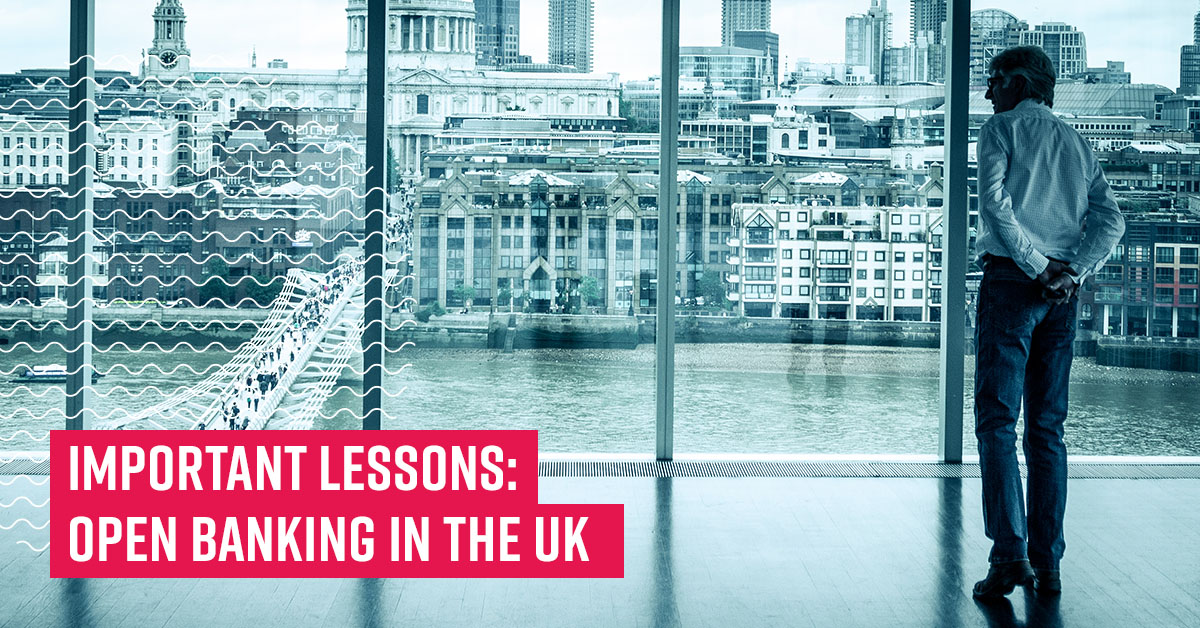The Most Important Lessons Learned About Open Banking in the UK
It’s famously said ‘experience is the teacher of all things’, so where better to turn to for open banking lessons than the UK. With open-banking regulations in force since early 2018, much can be drawn from the British financial services sector’s experience.

At the 2019 Equifax global SPARK conference, Steven Baker and Andy Kemp spoke of possible learnings that may help Australia embark on its open banking rollout. Steven is Head of Analytics, Transactional Data for Equifax UK and Andy is Head of Growth, Products and Propositions Innovation Projects for HSBC Commercial Banking.
Lesson 1: Start small
Have realistic expectations about the volume of transactions you’re likely to deal with in the early days. Open banking launched in the UK with much fanfare, but it began with a trickle rather than a bang. The Open Banking Implementation Entity’s data shows that 18 months since Open Banking’s inception, there has been a steady growth in customer awareness and uptake. In June 2019, the UK market had 66 million open banking transactions in one month, which is estimated to equate to between 300,000 to 500,000 customers, or approximately 0.5% of the UK population. It still has room to grow.
Start small with use cases. Head of Innovation for Equifax UK, Daniel Weaver, advises businesses to be patient. Wait until you’re in a position to collect customer feedback, assess conversions and analyse data. Aim for 3-6 month phased projects with clear objectives and goals, and use the learnings from one project to shape the next 3-6 month project sprint.
Lesson 2: Aim for frictionless customer experiences
Position your business to deliver the seamless digital experiences that consumers want. Zero in on what matters most to your customers: speed and flexibility, transparency, trust, interaction and engagement.
In the UK, Steven Baker recalls there was a significant jump in the uptake of open banking with the introduction of app-to-app redirection functionality from March 2019. Previously users had to remember passwords and usernames when sharing their financial data with organisations other than their banks. But with app-to-app redirection, biometric security, such as fingerprint or facial recognition, it enabled a friction-free user consent journey between the bank application and the third-party application. It’s one example of consumers being responsive to accessible, easy-to-use and relevant services which help them to achieve improved outcomes in their lives, including protection against fraud and data loss.
Lesson 3: Focus on the value, not the name
Consumers don’t need to recognise the term ‘open banking’ to understand its benefits. According to a UK survey carried out in December 2018, only one-in-four people have heard of open banking. Baker puts this into perspective by making the point that people don’t have to know what open banking is ahead of using it. He urges banks to articulate the value-exchange: educating customers about the financial and time-saving benefits.
Move conversations with customers beyond the technicalities of how open banking works and focus instead on how it can improve their financial lives. Also, provide reassurance that the customer maintains control.
Lesson 4: Combine transaction data with bureau scores
Be ready to harness multiple data sets to achieve a greater understanding of your customer’s capacity to repay credit. The combination of transactional data and Credit Reference Agency (CRA) data in the UK is already showing promising results in building a detailed picture of affordability. Transactional data offers a snapshot of spending and CRA data provides a more comprehensive view of longer-term commitments, including defaults. Baker explains that as an analyst, he’s excited to tell his clients about the 10% uplift in model performance. In individuals with thin credit files there is an even greater improvement in a model’s understanding of lending suitability.
Lesson 5: Present open banking as an option
Give customers a choice. Andy Kemp and Daniel Weaver both agree that open banking is not for everyone, as not all consumers bank online. However, their experience has shown that most customers opt to share their bank statements digitally through open banking, rather than supplying via branch or post.
Lesson 6: Develop cross-industry partnerships
Recognise the competitive benefits of innovation and strengthen your partnership strategies. Partner to leverage skills and capabilities that exist in the open banking market, helping your business to enter new markets, grow revenue and deliver products and services faster and more efficiently.
Look for partners who complement your internal capabilities and provide skillsets you don’t possess, such as machine learning and artificial intelligence. A partnership between Equifax UK and account information service provider, AccountScore, is an example of open banking innovation. The partnership has enabled the harmonising of Equifax’s extensive current account database with transaction data provided through open banking in real-time. Credit providers using online banking can now confirm the identity information of the person applying for credit.
Contact us to discuss how we can help you embark on your open banking journey.


